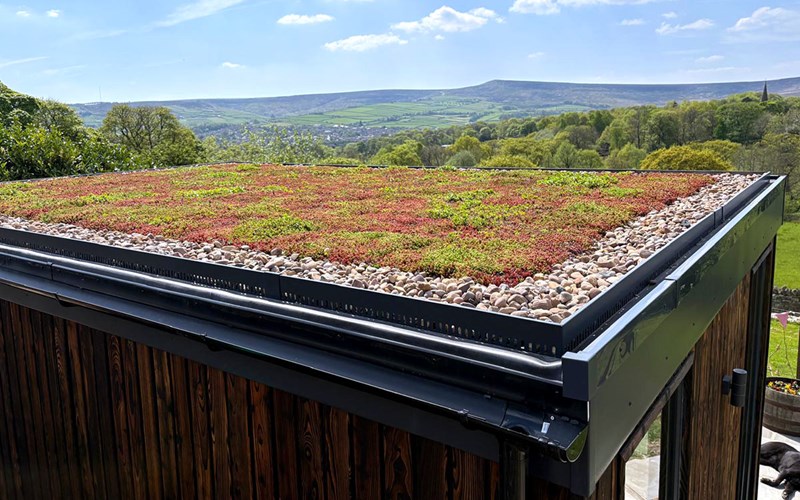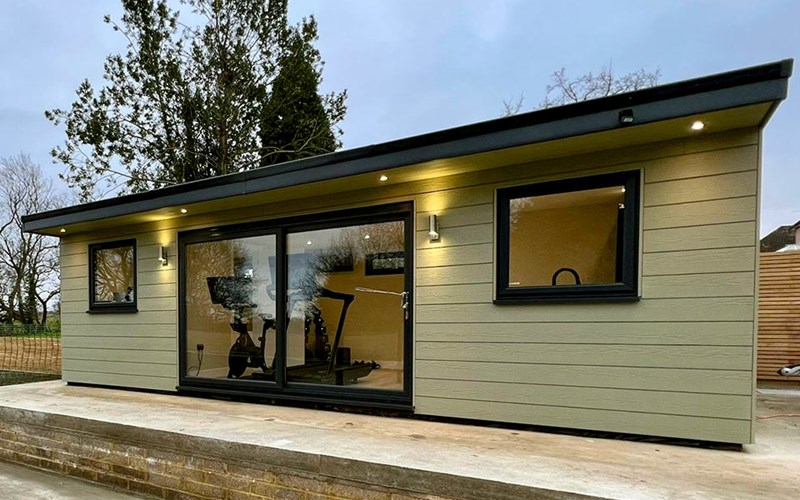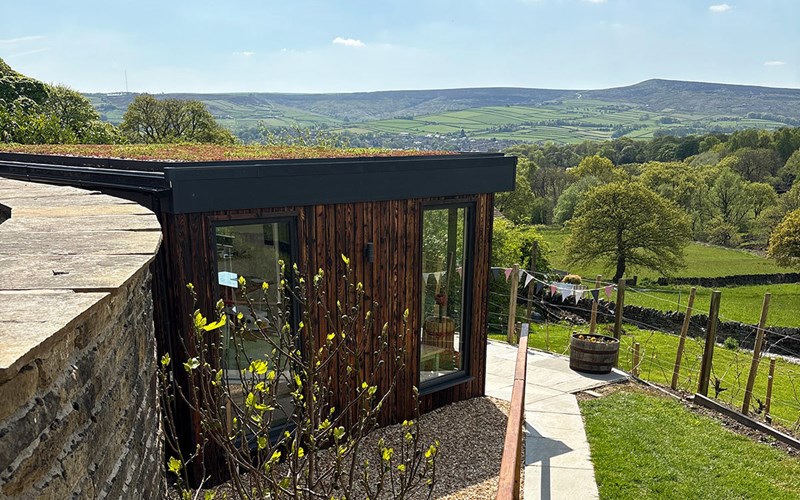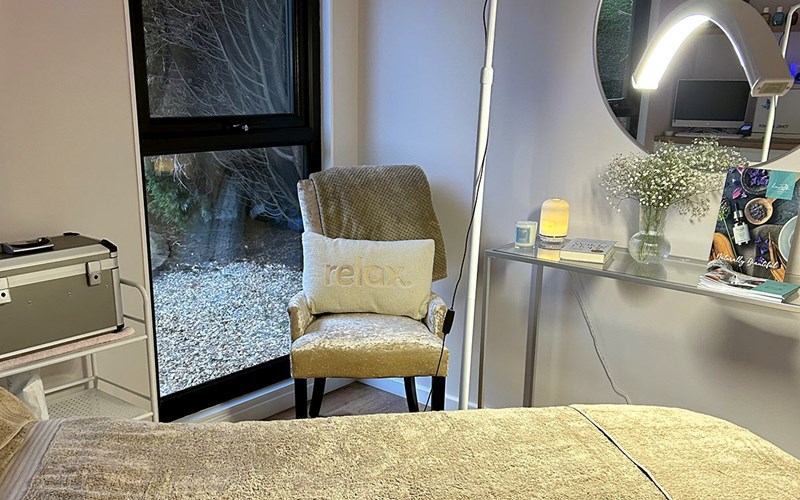What is a Sedum Roof & Why You Should Add One To Your New Garden Room?

Looking for an attractive, more sustainable roof option for your garden room? Make Room Outside is now offering a sedum roof as one of its specification options.
In this post, we’ll look at exactly what a sedum roof is, what the key plus points of installing one are and how your sedum green roof choice will benefit both your garden room and the environment.
What is a sedum roof?
So, what is a sedum roof?
Sometimes called a green roof system, a sedum roof consists of a layer of shallow-rooted sedum plants creating a lightweight ‘living roof’. Providing an important habitat for wildlife, this biodiverse option is environmentally friendly, low maintenance and aesthetically pleasing.
How much does a sedum roof weigh?
For use on garden rooms, we are talking about what is known as an extensive green roof. An extensive green roof is typically a lightweight construction, completely covered with sedum and succulents planted at a shallow depth to keep weight at a minimum and designed for low levels of maintenance.

Typical substrate depth is 60 – 150mm, accommodating usually drought-tolerant vegetation. This type of sedum roof will have a saturated weight upwards of 40kg/m2.
Other options include intensive green roofs, which are a totally different design and resemble traditional roof gardens as recreational spaces. Intensive roofs are substantially heavier, with substrates from 150 – 1000mm to support planting, lawns, and even small trees.
Because of their increased saturated weight upwards of 80kg/m2 of a sedum green roof, intensive green roofs will require additional structural support and much higher levels of maintenance because of the increased complexity of the planting.
Wildflower roofs are also an option for a rooftop garden, whilst a brown roof uses construction rubble as a substrate, which is then colonised over time by local species.
Does the weight affect the size you can have?
Choosing an extensive green roof does not affect the potential size of the room, but the building specification needs to be slightly uprated to allow for the extra weight. Each room would be assessed and designed specifically for the size required. Smaller rooms might require larger timbers, whereas larger rooms may need support steel to accommodate the extra weight.
Why would you add a sedum roof to your garden room?
Roof greening by choosing an attractive and environmentally friendly sedum roof for your new garden building offers a number of important benefits.
They can help improve the insulation of your garden room
Environmental efficiency and sustainability are important considerations when choosing the appropriate roof for your garden room. A sedum roof or green roof system will provide you with added levels of insulation and improve energy efficiency, reducing heating bills in the winter in colder climates or air conditioning in the summer months.
Reducing heat loss through the roof will help reduce your running costs whenever you use the building. The plants will also reflect the sun’s rays, cooling the space and adding to the environmental benefits of the sedum roof.
They help manage stormwater and runoff
Your green roof is also a great way to manage roof drainage, as the plants will absorb an estimated 75% of rainwater and moisture before releasing it back into the atmosphere. This makes full use of the resource rather than allowing it to form run-off. Even where heavy rainfall does cause run off, they will effectively slow the flow and reduce surges, puddling and flooding.
In dense urban areas, roof greening can reduce water load into sewers, providing the perfect drainage system partnership for ground-level Sustainable Urban Drainage Systems (SuDS).
They can extend the life of the roof membrane
When compared with traditional roof insulation systems, sedum roofs have an added advantage in that they protect the layer below. By soaking up UV rays from the sun, they provide added protection from these rays and can further extend the life of the roof membrane. Effective roof drainage also contributes.
They can help improve air quality by filtering pollution
The eco benefits continue. The plants forming your green roof will also help to filter pollution from the air, converting CO2 into oxygen. This is particularly important in urban areas subject to greater levels of air pollution, where your garden room can make a contribution towards a cleaner and greener environment and improved air quality.
They can help reduce noise internally
In big cities, built-up areas and even in rural environments, ambient noise is an issue we all have to deal with. The depth of the substrate of your sedum roof can help screen out unwanted noise, providing an added layer of sound insulation.
Of particular use if your garden room is a designated garden office or a haven for leisure pursuits, where peace and tranquillity are important to you, a green roof system is an effective noise barrier.
They enhance biodiversity
With habitats constantly reducing and species disappearing, encouraging wildlife into your garden space is increasingly important. Green roofs are so much more than just a roofing solution – they provide a safe sanctuary and undisturbed spaces for birds and insects, contributing towards biodiversity.
In our cities, sedum roofs have a particularly important role to play in terms of ecological benefits, enhancing the urban environment for wildlife. The term green roof is not exclusive; a sedum roof can also contain flowering plants and help blend buildings into their surroundings.
To help with planning permission and blending the building into the environment
If your garden room requires permissions such as listed building consent or even heritage planning permission and conservation areas consent, then making the decision to go with a sedum roof may enhance the appeal of your application. This is exactly what Helme Edge Vineyard did.
A sedum roof is a recognised way of helping a structure to blend well with its surroundings. Adding greenery and colour rather than a standard grey or black roof will preserve the aesthetics of the local environment.
How do you establish a sedum roof?
Adding a sedum roof to a garden room requires careful consideration and planning. There are two ready-made options available in the form of sedum matting and pre-grown sedum tiles with a waterproof membrane. Both will require a little maintenance to sustain plant life.
Most sedum matting products will offer you a good choice of plant species specially selected for green roofs, which are drought tolerant and maintain their colour and shape. It is a good idea to choose one with reinforcing mesh, which will help to keep the planting in place in the event of inclement weather like storms, wind and rain.
You can also buy sedum tiles to create a green roof system, offering similar properties. These pre-grown tiles with sedum plants and succulent plants can be installed on any new or existing roof area.
If you want to build your own sedum roof, be aware of the layers you will need to incorporate, which include:-
-
A waterproof membrane sits on the roof structure to prevent leaks and protect the building
-
A root barrier to prevent root penetration of roots over time
-
A drainage layer to manage water and divert excess water on the roof
-
A filter fabric to help keep the planting in place and facilitate drainage
-
A growing medium containing a filler material and compost for nutrients, typically 50-150mm in depth
This will help create the ideal sedum roof, combining practicality and sustainability.
It’s also important to be certain that the existing structure can support the weight of the green solution when installing a green roof. Professional installation is recommended to ensure the structural load will not be too great.
Building regulations play a role here, too, when installing a sedum roof. The Building Regulations Approved Document A outlines provisions related to load-bearing capacity for green roof construction, and recent health and safety legislation dictates that at least two people must be present during the installation.
How much does a sedum roof cost?
The size of the roof is a factor when calculating the cost of a sedum roof. A green roof system for garden rooms will be a slightly more expensive option than a traditional structural finish, and your garden room supplier will advise on the different choices.
If you are installing a green roof, be aware of the Building Regulations and Health & Safety implications. Costs are calculated per square meter, and ready-grown sedum is more expensive than choosing a system where you install the planting yourself.
At Make Room Outside, we handle the entire project for our garden rooms with sedum roofs. You benefit from an attractive and environmentally friendly structure installed and ready for use.
The price of a sedum roof for a garden room is typically between £55 to £150 per square metre, depending on whether it is an extensive or intensive roof. This is a wide gamut which can be refined once your specification is understood.
How long does a sedum roof last?
Realistically, a sedum roof can outlast the roof structure it covers, dependent upon maintenance and other considerations, with a properly maintained green roof having an expected lifespan of up to 40 to 50 years.
Add to that the fact that it also protects the underlying roof structure and improves energy efficiency, and it looks like a sensible and financially viable solution for garden rooms.
You will need to factor in some care and attention for your sedum green roof. It is a living entity, so the sedum plants should be checked monthly and pruned in spring and autumn, when they should also be inspected for weeds and provided with appropriate fertiliser.
Are there any disadvantages to a sedum roof?
It is important to ensure the structural stability of the building in question before adding a sedum roof. Other potential disadvantages include:-
-
Increased cost over more traditional building materials
-
Greater weight and more structural support is required
-
Additional maintenance costs and maintenance requirements to keep the sedum roof in good order over the years
However, despite these minor issues, a green roof is really worth it. Particularly for a garden room, it will enhance the appearance and appeal of the building when viewed from your home.
Summary
So, is a sedum roof the right choice for you and your garden room?
With a whole range of benefits, including the contribution you can make towards biodiversity and air quality, the practical benefits of a longer life span and improved insulating properties and energy efficiency, a living green roof is a sound and viable decision.
Why not visit the Make Room Outside Show Village in Copley, Halifax, and talk to us about how a sedum roof could work for you?
Jul 09 2025
Further reading from Make Room

Jan 09 2024
How much is a garden room?

Jun 23 2025

